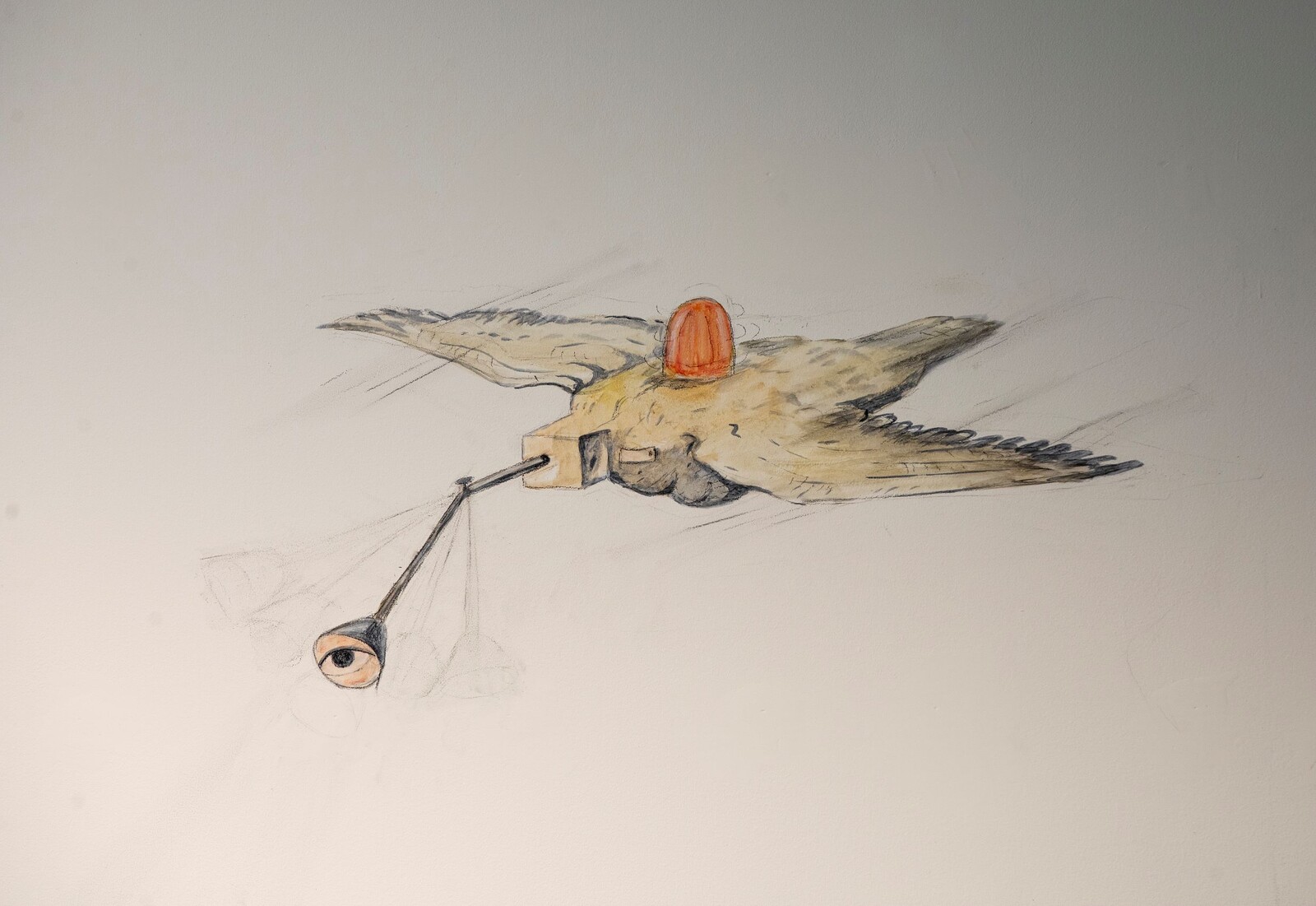January 28–June 4, 2023
Andre zigarrogileak plaza, 1
International Centre for Contemporary Culture
20012 Donostia-San Sebastián
Spain
T +34 943 11 88 55
info@tabakalera.eus
The first device capable of recording a series of sequential photographs was developed by an astronomer, Pierre Jules César Janssen. The “revolver photographique” was a huge camera system equipped with a cross-shaped mechanism, similar to the disk in a colt revolver, able to rotate clockwise capturing 48 exposures in 72 seconds on a daguerreotype disk. Unlike Eadweard Muybridge’s earlier experiments, the “revolver” did not require a series of separate cameras. Janssen’s apparatus led to the invention of chronophotography, when in 1882 Étienne-Jules Marey adapted and improved it into a device capable of capturing 12 frames per second. Though chronophotography’s original purpose was to help scientists study objects in motion, the new field swiftly developed into a broader industry, which became the defining medium of modernity.
From the “visual ray” metaphor to Pierre Jules César Janssen’s “revolver photographique,” the history of optics and the history of ballistics developed in parallel to one another, ultimately conflating in the figure of the drone: a camera that can kill. But under the aegis of, and working in tandem with, this technoscientific trajectory one also finds a whole racialised and gendered regime of visibility, suggesting an ideological process at work that, as theorist Meg Armstrong argues, makes “what is contingent and local, perhaps even idiosyncratic, in matters of taste appear to be natural, and thus beyond dispute.”(1) The present exhibition aims to map the structuring force of this white gaze in both its concrete and abstract dimensions via the work and research of Haig Aivazian, Zach Blas, Pauline Curnier Jardin, Ho Rui An, Izaro Ieregi González, Rajkamal Kahlon, Kiluanji Kia Henda, Kapwani Kiwanga, Prabhakar Pachpute, Miranda Pennell, Natascha Sadr Haghighian, and Azucena Vieites.
A special section of the exhibition, curated by Germán Labrador Méndez, examines the way national and transnational space is structured by a colonial continuum, binding Carlism and the Rif Wars to the ascent of fascism and the Spanish Civil War, thereby tying the history of modern violence to the organisation of scopic regimes.
Evil Eye: The Parallel History of Optics and Ballistics will include an extensive programme of parallel activities which will run until June. The performance Conjugate One to Each Other by Izaro Ieregi González will be offered in three chapters on three dates and in three different Tabakalera spaces.
Throughout the six month duration of the exhibition the film series Evil Eye will offer monthly screenings. The first session will take place on 4 February with a screening of Images of World and the Inscription of War by Harun Farocki, presented by artist Mikel Otxoteko. On this occasion, the Arte-makina contemporary art introduction course will welcome guests Mikel Alberdi, Kimia Kamvari, Martin Etxauri, and Leire Vergara. In addition, the usual guided visits and family art workshops will be offered.
This exhibition is part of the first edition of Connective Tissue/ Tejidos conjuntivos, Museo Reina Sofía’s study programme in Critical Museology, Artistic Research Practices and Cultural Studies, which will be held throughout 2023.
(1) Meg Armstrong, “The Effects of Blackness”: Gender, Race, and the Sublime in the Aesthetic Theories of Burke and Kant,” Journal of Aesthetics and Art Criticism, vol. 54, no. 3 (1996): pp. 213–236.
Curators: Ana Teixeira Pinto and Oier Etxeberria Bereziartua, in collaboration with Germán Labrador.



